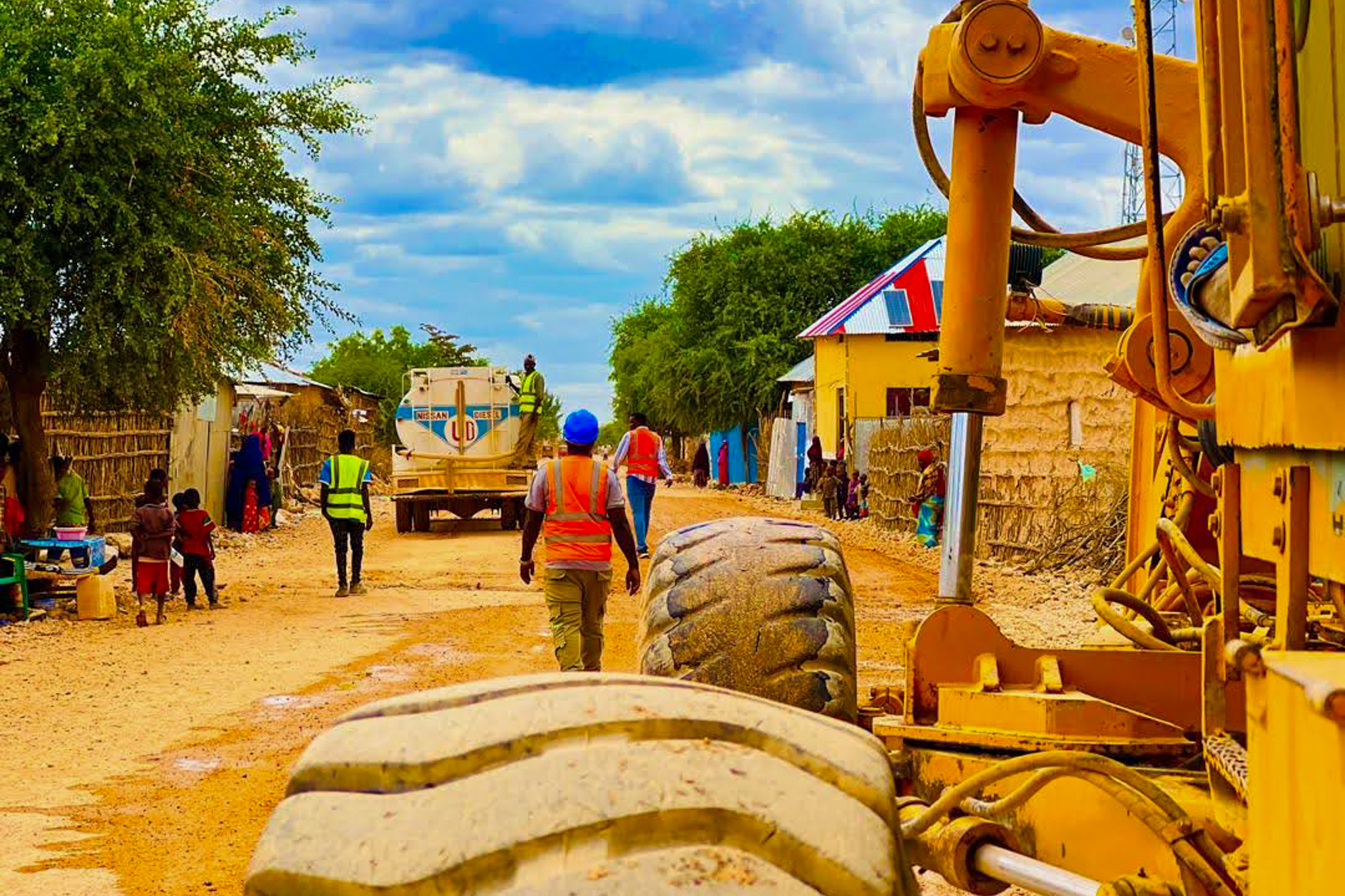Recognizing the key role of local governments and communities in leading development
Addressing the root causes of Somalia's challenges
August 13, 2024

Area Based Integrated Programmes strengthen the social contract between people and their governments, enhancing security, fostering accountability, delivering essential services and supporting livelihoods and job creation.
Somalia has faced decades of armed conflict, social and political instability, and the negative impacts of climate change. There is a consensus between the federal government and development partners that if it wants to catch up with the rest of the world, there cannot be business as usual. There is a need to break away from protracted crises and fragility and a reliance on humanitarian assistance that provides relief but does not address the root causes of problems. We need to invest in resilient communities, systems, and institutions that thrive without partners’ inputs or resources. An approach that promotes Somali-owned, Somali-led, integrated interventions is essential.
The conflict is one factor that shapes Somalia’s specific development needs. The government has launched a military offensive liberating a number of areas from Al-Shabaab control. This has created the need to ramp up stabilization efforts and to strengthen government presence in newly liberated areas to consolidate the social contract, deliver services and support people's livelihoods.
At the same time the effects of climate change have been very disruptive for millions. The country has been affected by severe droughts, most recently in 2022. In December 2023, the country faced the worst flooding of the past 100 years. Some communities have not been able to recover from one crisis to another. Climate change is also exacerbating conflicts, violence and displacement. Somalia has about 3.8 million internally displaced people that are mostly congregating around major cities and towns, making it one of the fastest urbanizing countries in the world.
Addressing these issues is even more complex because the state building process in Somalia is still ongoing. There is not yet an accepted model that reflects a national agreement on power and resource sharing between the federal government and states, which have their own political dynamics, challenges and constraints.
In such a complex environment UNDP sees an integrated multi-sectoral area-based approach as the obvious choice. This is why we have implemented Area Based Integrated Programmes (ABIP) to strengthen the social contract between people and their governments by enhancing security, fostering accountability, delivering essential services, empowering and engaging women, youth, and civil society and supporting livelihoods and job creation. This is particularly well suited to areas where state control remains weak or where communities are struggling to get back on their feet in the aftermath of conflict and displacement. It is equally essential in places most affected by climate change, and towns receiving internally displaced people that are overwhelmed because their services and resources are stretched.
It allows us to design strategies that are responsive to the needs of communities and which are respectful of local norms. We use political economy analysis to identify local power structures to ensure that interventions are not only technically sound but also strengthen social cohesion and are politically viable. We also use a tool called conflict navigator to establish critical conflict baselines that inform local reconciliation plans by addressing the root causes of conflict, such as resource scarcity or climate change. To ensure we are responding to their needs we collect feedback to understand how communities perceive the support they receive and its impact on their lives.

UNDP programming in Somalia invests in building local systems, institutions and capacities that can continue to function after the programme ends.
ABIP adapts to rapidly changing environmental and political dynamics. We have revised how we design, implement and monitor projects to create a continuous process of learning. This has meant listening to local perspectives, questioning our assumptions, putting agility and responsiveness to context at the centre of how we work, learning collaboratively throughout the project cycles and making changes when the situation warrants it. We can already see clearly that this has been beneficial, given the extremely fluid and dynamic nature of Somalia. It has allowed our programmes to be more relevant and more effective and we are seeing positive results for those we work with.
The combination of an empowered Somali-owned, Somali-led ABIP governance structure with enhanced monitoring has incentivized all key stakeholders to regularly reflect on the extent to which interventions are working. Periodically, joint reviews allow us to assess whether we are effectively addressing root causes of core issues and whether we are on track. It has enabled us to shift focus from activity-based immediate results such as training sessions to seeking evidence-based transformational changes such as measurable changes attributed to trainees’ application of their newly acquired skills. This offers opportunities to change course when required. This is a powerful compass to ensure collective stewardship of projects and optimal use of scarce resources.
Above all, both the area-based and adaptive management approaches recognize the key role of local governments and communities in leading development in a collaborative and pragmatic way. The ABIP invests in building local systems, institutions and capacities that can continue to function after the programme ends. This is an approach that the government is really interested in and has been well received by communities.
For me it has also been an interesting learning path. I've been familiar with area-based development approaches for many years but it's the first time that I’ve experienced this with adaptive management to respond to such a dynamic, fragile context. The combination of deeply understanding local contexts, pragmatically adapting programmes as situations change, and investing in local communities, institutions, and capacities to drive progress in the long term is a powerful tool to equip UNDP to play its role as an integrator in the humanitarian-development-peace nexus.

 Locations
Locations